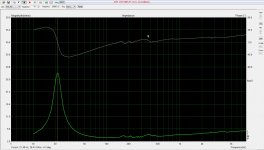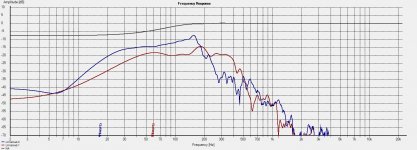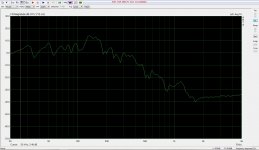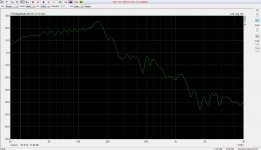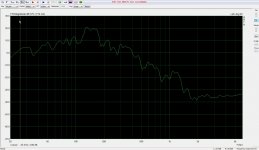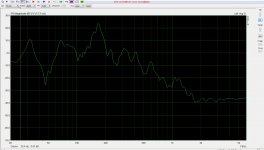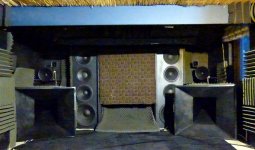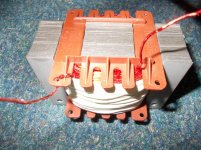If bass is "punchy" or not is usually a midrange property. That darn Fourier stuff again. You of course have selected superb mid-range armament. My experience is bass is a matter of managing the peaks and distortion. Are you expecting some sort of un-equal phase cancellation front to back modifying the radiation pattern? Please enlighten me here.
Yes the idea is change the radiation pattern to get cardioid, for what the inventer concerns, but I try to get more efficienty and keep open baffle sound intact for as far this wil work, sound world is weird you now but fascinating.
Oke I have did measurements here there are.
1, resonance, 2, sweep 2 meter distance, 3, sweep 1 meter distance, 4, sweep near distance, 5, sweep 1 meter distance with shelf filter on, 5, sweep with holm impulse red is back and blue is front.
Some tips about the measurement welcome, and it is done inside my living room, so not ideal but measure in the rain outside is even more severe.
The next I will make the box bigger, see what this brings, like the inside closed box properties for this drivers. As you see the plots are looking like the dipoles, but I have more spl watt, even without shelf filters I have really good bass, there is some ripple in the plot like we have with transmission lines, but it is very small and can come from the shelf filter ripple because it is a very simple one for testing.
While measurement with holm impulse, things did shake in the room, so it looks good.
thanks
Attachments
Last edited:
kees52, not sure I do understand your last post but I believe you misread mine. I was referring to John's last post and "near field" means "source very close to the listener's head".
Ahh oke, I understand, I have did measurements near field, but I did write that wrong? I did mean the mic very close to the opening of the box, little the same as with my ear but then I get trouble.
Why you guys do go married if you are in love with sound.
Be the way, this bas box is quite small, and give good sound even with movies, I have a short u frame with two old phillips bas and tweeter for the region above 120 Hz, this old 1975 speakers do very well, I like sustainability, old speakers are often very good.
I drive a klassic car also, but not much.
Oke serieus Waff is sometimes a problem that is why I am free man, if I don,t the third worldwar is near.
Be the way, this bas box is quite small, and give good sound even with movies, I have a short u frame with two old phillips bas and tweeter for the region above 120 Hz, this old 1975 speakers do very well, I like sustainability, old speakers are often very good.
I drive a klassic car also, but not much.
Oke serieus Waff is sometimes a problem that is why I am free man, if I don,t the third worldwar is near.
https://sphotos-b.xx.fbcdn.net/hphotos-ash3/540619_227504810719901_304623691_n.jpg\
The upper bass here, the lines next to the bass horns, is cardiod. It sounds very good.
The upper bass here, the lines next to the bass horns, is cardiod. It sounds very good.
I think still that there is not a better sound then with horns, I want some time test that also, a tapped horn, then a basmid horn with the small fostex 8 inch speaker, not to big and big deep bass, only a tapped horn, I don,t now that sounds so good, much different outcomes here.
Nice stuff Pooh.
Nice stuff Pooh.
Oke, a serieus quest i did, for the dipoles and the new dipole-cardiod, I have did qts meaurements with the speakers in the box, it is not possibly to get more then 0.45 for a 0.33 speaker, so I did discover and you al ready that for this ripole/dipole/cardioid a woofer of Fs 30 hz has need also a qtis of 0.50 or 0.60 for a little bump in the low end what is not bad, 0.6 or 0.5 for better impulse behavior what is also importand, so i gess a qts of 0.50 0.55 is ideal.
I did get with the visatons not higher then 0.45 what is 0.15 higher then in open air, the Fs did drop to 15 Hz.
very interesting, open baffles likes high qts but above 1 it is flossy bass bad impulse behavior. dipoles are really interesting when using big speakers.
I did get with the visatons not higher then 0.45 what is 0.15 higher then in open air, the Fs did drop to 15 Hz.
very interesting, open baffles likes high qts but above 1 it is flossy bass bad impulse behavior. dipoles are really interesting when using big speakers.
I looked at this a long time ago, when it was first published. Here is the result of my investigation: <snip>
Hi John
You rae right, the investigation of this guys is not bullit proof, I have measured front back and sides, but I dod not see a drop on the back and sides of the spl, but only a little, maybe she have in the electronics something wromg.
but it give bass, yes, but it looks te same as the normal w dipole, only it has some more spl per watt power.
here I have did a test with 20 watts input on 20 hz, more was not possible because of x max, but it do shake everything, except I can not hear it.
regards
20Hz bas tone trough dipole box - YouTube
Oke, I did drop the german dipole-cardioid for now and busy with the dipole again, I did see that I have a lot of room influence when measuring, can somewone tell me how to cope with rooms, this for me not something I have experience of.
I did have thin sound but if there are sub tones then it gets serieus spl here, so I did measurements and saw a lot of dips and peaks in the place of where it thin sound exists there are dips of 10 dB ore even more, and yes then I do mis body in the music.
I have put in a drawn how my room is. Some tips where to place the bas box i do like, included measurement of my room the L form is not so good I think..
I get good graph if I do measure close to the dipole box, like max 50 cm, longer then I have a lot of cancelations and peaks special around 40 to 80 hz and here I get the music body, and so it is thin, very low bass is more then enough, very nice and clean also.
thanks.
I did have thin sound but if there are sub tones then it gets serieus spl here, so I did measurements and saw a lot of dips and peaks in the place of where it thin sound exists there are dips of 10 dB ore even more, and yes then I do mis body in the music.
I have put in a drawn how my room is. Some tips where to place the bas box i do like, included measurement of my room the L form is not so good I think..
I get good graph if I do measure close to the dipole box, like max 50 cm, longer then I have a lot of cancelations and peaks special around 40 to 80 hz and here I get the music body, and so it is thin, very low bass is more then enough, very nice and clean also.
thanks.
Attachments
-
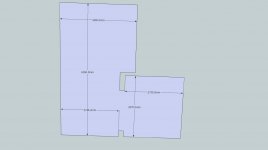 room.jpg75.2 KB · Views: 124
room.jpg75.2 KB · Views: 124 -
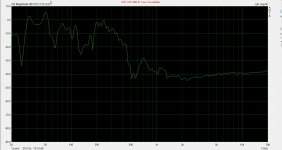 room mode2- mic other end of room.jpg132.4 KB · Views: 93
room mode2- mic other end of room.jpg132.4 KB · Views: 93 -
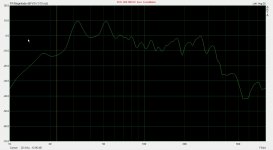 room mode2- mic end of room.jpg109.5 KB · Views: 706
room mode2- mic end of room.jpg109.5 KB · Views: 706 -
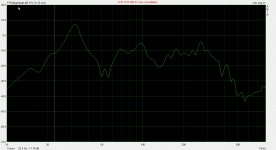 room mode2- mic 3 m distance.jpg107.9 KB · Views: 706
room mode2- mic 3 m distance.jpg107.9 KB · Views: 706 -
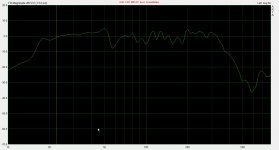 room mode2- mic 1 m distance.jpg101 KB · Views: 718
room mode2- mic 1 m distance.jpg101 KB · Views: 718 -
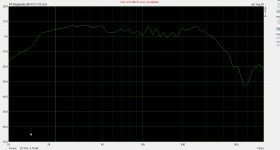 room mode2- mic 0.5 m distance.jpg105.8 KB · Views: 732
room mode2- mic 0.5 m distance.jpg105.8 KB · Views: 732 -
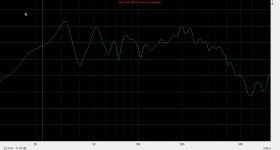 room mode1- mic 2 m distance.jpg88.6 KB · Views: 731
room mode1- mic 2 m distance.jpg88.6 KB · Views: 731
Last edited:
Hi Kees52,
After you have finished your research on dipole bass, you may find this Power Point presentation of interest.
http://www.gedlee.com/downloads/Optimal Bass Playback in Small Rooms.pptx
John K's post No.31 may be alluding to the same theories as described in this thread (John, please correct me if I'm wrong).
Regards
Peter
After you have finished your research on dipole bass, you may find this Power Point presentation of interest.
http://www.gedlee.com/downloads/Optimal Bass Playback in Small Rooms.pptx
John K's post No.31 may be alluding to the same theories as described in this thread (John, please correct me if I'm wrong).
Regards
Peter
Hi Peter
I have found the dip reason for mid, the mid speaker I have change to 6 dB and reverse the polarity, now it sounds very well, so just only the bass is needed to get best as can, I do need two stacked dipoles with high xmax 12 inch and I have enough sound, the visatons do very well al do these have a low qts of 0.34..
thanks for your input and pps.
kees
I have found the dip reason for mid, the mid speaker I have change to 6 dB and reverse the polarity, now it sounds very well, so just only the bass is needed to get best as can, I do need two stacked dipoles with high xmax 12 inch and I have enough sound, the visatons do very well al do these have a low qts of 0.34..
thanks for your input and pps.
kees
I haven't read Earl's PPT presentation but we have communicated in the past and discussed this on the net as well. I think I am pretty much in agreement with Earl's basic ideas, though system designed to be dipoles or cardioids in the free field do have some differences from just using distributed monopole sources do to phase differences, delays and the equalization.
The thing that really pushed me in this direction is that when I took some measurements in a room with a monopole source and moved the source only about 18" the response at the listening position changed significantly. Since this is about the same separation as my dipole sand cardioids I realized that the two sources of the dipole or cardioid must also be radiating significantly different SPL relative to the listening position and the summation would not be anything like free field.
With regard the the experiments with the so called cardioid-dipole and an H frame dipole I would still expect the H frame to perform better because the front and rear response will be the same. In the cardioid-dipole the asymmetry between front and rear results is different resonances. Of course, if the response is low passed below the point where the resonances contribute to the response it's just a dipole anyway.
I would say that a system with dipole or cardioid bass typically has better in room response but I thing the main reason for that is because of the multiple source arrangement.
The thing that really pushed me in this direction is that when I took some measurements in a room with a monopole source and moved the source only about 18" the response at the listening position changed significantly. Since this is about the same separation as my dipole sand cardioids I realized that the two sources of the dipole or cardioid must also be radiating significantly different SPL relative to the listening position and the summation would not be anything like free field.
With regard the the experiments with the so called cardioid-dipole and an H frame dipole I would still expect the H frame to perform better because the front and rear response will be the same. In the cardioid-dipole the asymmetry between front and rear results is different resonances. Of course, if the response is low passed below the point where the resonances contribute to the response it's just a dipole anyway.
I would say that a system with dipole or cardioid bass typically has better in room response but I thing the main reason for that is because of the multiple source arrangement.
Last edited:
Hi John
the dipole-cardioid did act as a normal dipole indeed, only with more noise from the small output side, not a succes i did discover, so I have now back the normal linkwitz dipoles who give nice bass, the lower octaves are mucho present like the 30 hz is loud, higher it did cancel out, all the measurements in post 53 was with two dipoles, I had a bad coil so I did wind myself a better one of 15 mH for the low pass.
I agree with the H frames, i had these before the dipoles and did give more bas and better distributed in the room, it did not go as low as dipoles do, the dipoles are very nice little boxes who do good but H frame have more spl per watt.
I go build two extra dipoles and testing the room, I have used now a 6 dB dipole filter for the baffle fall off and it do wonders.
the polarity shift of the bas mid speakers did make the thinny sound disapair, a 6 dB filter for the bas mid did even better, so much different when play with components, incredible.
thanks.
kees
the dipole-cardioid did act as a normal dipole indeed, only with more noise from the small output side, not a succes i did discover, so I have now back the normal linkwitz dipoles who give nice bass, the lower octaves are mucho present like the 30 hz is loud, higher it did cancel out, all the measurements in post 53 was with two dipoles, I had a bad coil so I did wind myself a better one of 15 mH for the low pass.
I agree with the H frames, i had these before the dipoles and did give more bas and better distributed in the room, it did not go as low as dipoles do, the dipoles are very nice little boxes who do good but H frame have more spl per watt.
I go build two extra dipoles and testing the room, I have used now a 6 dB dipole filter for the baffle fall off and it do wonders.
the polarity shift of the bas mid speakers did make the thinny sound disapair, a 6 dB filter for the bas mid did even better, so much different when play with components, incredible.
thanks.
kees
Attachments
Last edited:
I would say that a system with dipole or cardioid bass typically has better in room response but I thing the main reason for that is because of the multiple source arrangement.
I have read you mentioning this a few times. In that case, if you had 4x woofers as in normal dipoles, would you think it's better to build 4x monopole subs (ignoring the fact that you need additional amps/xo) ?
I have some question albout the 6 dB roll off of an dipole, my sound is thin, low bass is oke and ik think that I do something wrong here, I need to make a shelf filter who starts to work at the dipole peak? dipole is low passed below it so it give no problem but shelfing from 150 Hz will give more body in the music and not thin sound anymore here I think is a error I have not seen before, dipole correction is somthing else then baffle step and so i learn more and more of this complicated matter.
Some years ago I did an optimization series of tests to find my preference for a H or U frame dipole bass structure. I have two Peerless 830500 12"drivers for bass ( one per channel) and decided the way to control vibration was through mass. I secured a number of metal rings that would be strung together to form a pipe ( bearings from a train gearbox). Each segment is 38mm long so I could adjust the dipole D in steps of 38, 76 mm. I tried using incremental lengths of pipe at the front and rear of the driver so tests varied from a U frame to a H frame using up to to 6 rings on front and back. Measurements were in my room. I used a sound quality metric and subjective ratings to quantify the results. I had a test matrix at the start and didn't do what I had planned at the start because it just took so long, it was still a lot of measurements and I started to form a view of what was right and what wasn't after a few hours and trimmed the test regime down to something I could tolerate.
I can't claim to understand the classification to a dipole or cardioid as my measurements didn't extend to polar patterns, but the end result was a clear preference for the H frame structure with the dimensions set to maximized within the limits to manage the frames 1/4 wave duct resonances.
The work was done with the <100Hz drivers at the 'normal location' : on the floor below the panel delivering which delivers >100Hz.
Since then I have moved the <100 hz subs to a new location, this may deserve a revisit of the H Vs U frame testing? My bias to the views formed from this past testing is entrenched so I not inclined to revisit the work, not that I am right or the work is not worth doing, just that it wont be me doing it.
Refining the sub location was an interesting advancement: at the times I want to critically listen the subs are placed to either side of the listening position, almost like a pair of headphones about 1m away. The main panel remains at a 'normal' location. Tests on room mode excitation has also led me to run the subs in mono with the drivers to my left and right in phase meaning that when the left driver moves to the left, the right does so also. The crossover is as low as the mids can handle and remain linear at 90dB @ 1m, (95Hz with current dipole baffle). I find I can localise to about 120 hz and I am still playing with crossovers to find if I prefer LR4 or LR8 or different frequencies or ...
The orientation of these H frame subs is with the drive axis to the listener which is also the shortest room dimension, meaning the longer room dimensions are presented with lesser amplitude from the 'dipole' output.
I haven't tried this location using a U frame, having made the subs I am not motivated to tear things up and past work has convinced me its not worth it, but I could be wrong.
Not sure if I can claim dipole beats cardioid, but H frame near field is the best I have found up to now.
John Reekie (citing John K) set me on this 'near field' path, see:
See http://www.hifizine.com/2011/09/prototyping-dipole-bass-system/
I can't claim to understand the classification to a dipole or cardioid as my measurements didn't extend to polar patterns, but the end result was a clear preference for the H frame structure with the dimensions set to maximized within the limits to manage the frames 1/4 wave duct resonances.
The work was done with the <100Hz drivers at the 'normal location' : on the floor below the panel delivering which delivers >100Hz.
Since then I have moved the <100 hz subs to a new location, this may deserve a revisit of the H Vs U frame testing? My bias to the views formed from this past testing is entrenched so I not inclined to revisit the work, not that I am right or the work is not worth doing, just that it wont be me doing it.
Refining the sub location was an interesting advancement: at the times I want to critically listen the subs are placed to either side of the listening position, almost like a pair of headphones about 1m away. The main panel remains at a 'normal' location. Tests on room mode excitation has also led me to run the subs in mono with the drivers to my left and right in phase meaning that when the left driver moves to the left, the right does so also. The crossover is as low as the mids can handle and remain linear at 90dB @ 1m, (95Hz with current dipole baffle). I find I can localise to about 120 hz and I am still playing with crossovers to find if I prefer LR4 or LR8 or different frequencies or ...
The orientation of these H frame subs is with the drive axis to the listener which is also the shortest room dimension, meaning the longer room dimensions are presented with lesser amplitude from the 'dipole' output.
I haven't tried this location using a U frame, having made the subs I am not motivated to tear things up and past work has convinced me its not worth it, but I could be wrong.
Not sure if I can claim dipole beats cardioid, but H frame near field is the best I have found up to now.
John Reekie (citing John K) set me on this 'near field' path, see:
See http://www.hifizine.com/2011/09/prototyping-dipole-bass-system/
- Status
- This old topic is closed. If you want to reopen this topic, contact a moderator using the "Report Post" button.
- Home
- Loudspeakers
- Multi-Way
- Cardioid Bass.... yes, very good!!
